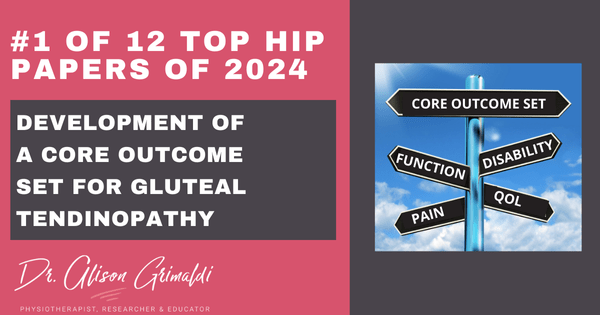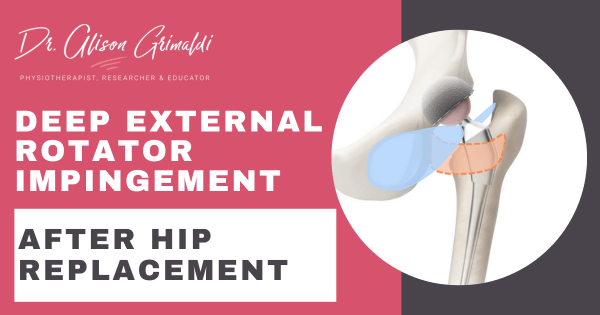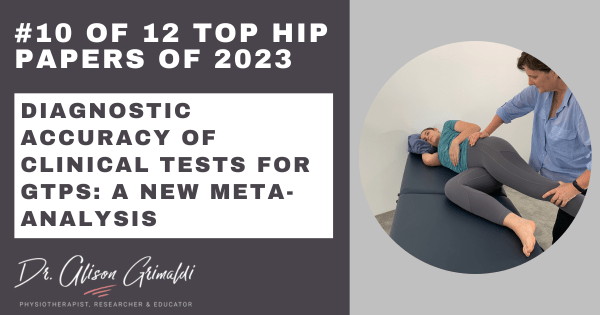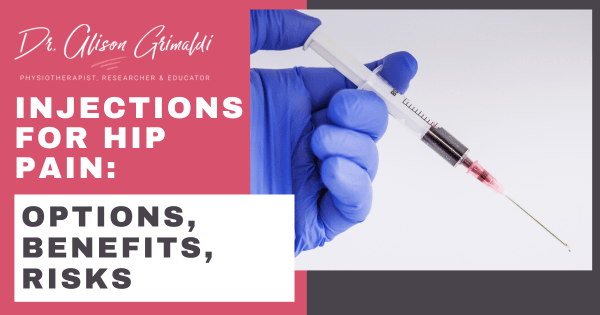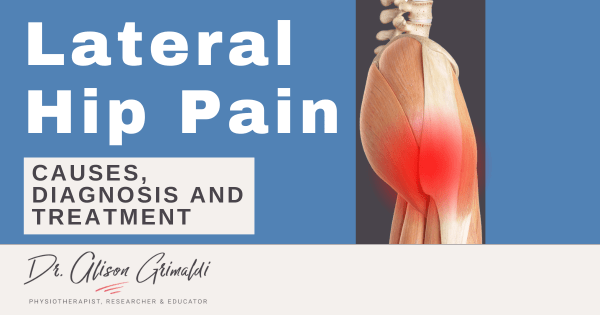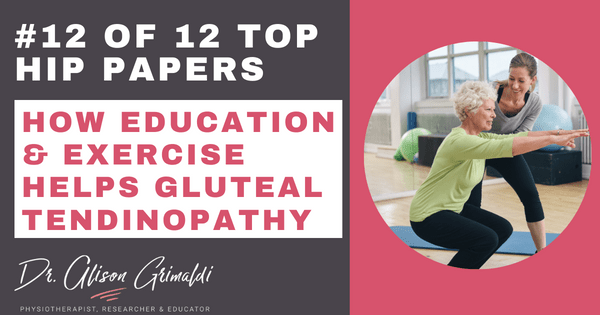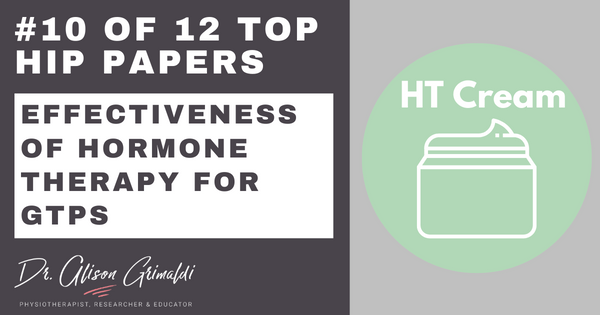Deep external rotator impingement after hip replacement

Deep external rotator impingement after hip replacement is one of the less recognised complications of total hip arthroplasty (total hip replacement surgery). While this is generally a positive and life-changing surgical procedure, relieving pain and restoring function, complications can occur. This is true of any surgery of course. Impingement of the iliopsoas tendon against the prothesis is a more common source of post-operative pain. However, deep external rotator impingement after hip replacement should be considered in those with persistent retro-trochanteric (lower buttock) or medial groin pain.
Can't make the workshop? Do the Online Course
Have you heard about Hip Academy?
Learn more about Prehab and Rehab for Hip Arthoplasty in hip Academy:
Past Meeting: Prehab & Rehab for Total Hip Arthroplasty
This past live Hip Academy meeting, explored:
- Late stage OA & Prehab
- Post Operative Rehabilitation
- Impact of Surgical Approach

Enjoy the benefits of a world class educational Hip Program, specifically designed by Dr Alison Grimaldi to help improve your knowledge surrounding the Hip and Pelvis, and become an expert in your field + Get access to all previous member meeting recordings!
If you missed last month’s blog, you might also be interested in reading about what happens to the deep external rotators during hip replacement surgery.
Here are the 2 main topics we’ll be covering in this blog:
Ischiofemoral impingement after hip arthroplasty
The deep hip external rotators are a group of 6 short muscles at the back of the hip. One of them, the quadratus femoris may be exposed to ischiofemoral impingement after hip arthroplasty.
Ischiofemoral impingement is an important cause of pain and dysfunction of the deep external rotators after total hip replacement.1,2 Ischiofemoral impingement refers to soft tissue impingement, primarily of the quadratus femoris muscle, between the ischial tuberosity and the lesser trochanter of the femur.
Repetitive impingement of the quadratus femoris muscle between the bones occurs most commonly during walking or running, as the femur passes the ischium during mid-late stance phase. The ischiofemoral space will be narrowest with combinations of hip extension, adduction and external rotation.
Ischiofemoral impingement can be structural, functional or a combination of both.
Structural ischiofemoral impingement: refers to a structurally small ischiofemoral interval (space), related to morphology of the ischium and proximal femur in the native hip.
Functional ischiofemoral impingement: is where structure is within normal limits, but the person moves with combinations of excessive extension – adduction – external rotation.
Total hip replacement may alter potential for both structural and functional impingement, due to prosthetic selection, prosthetic placement, abductor deficiency, or any combination of these factors.


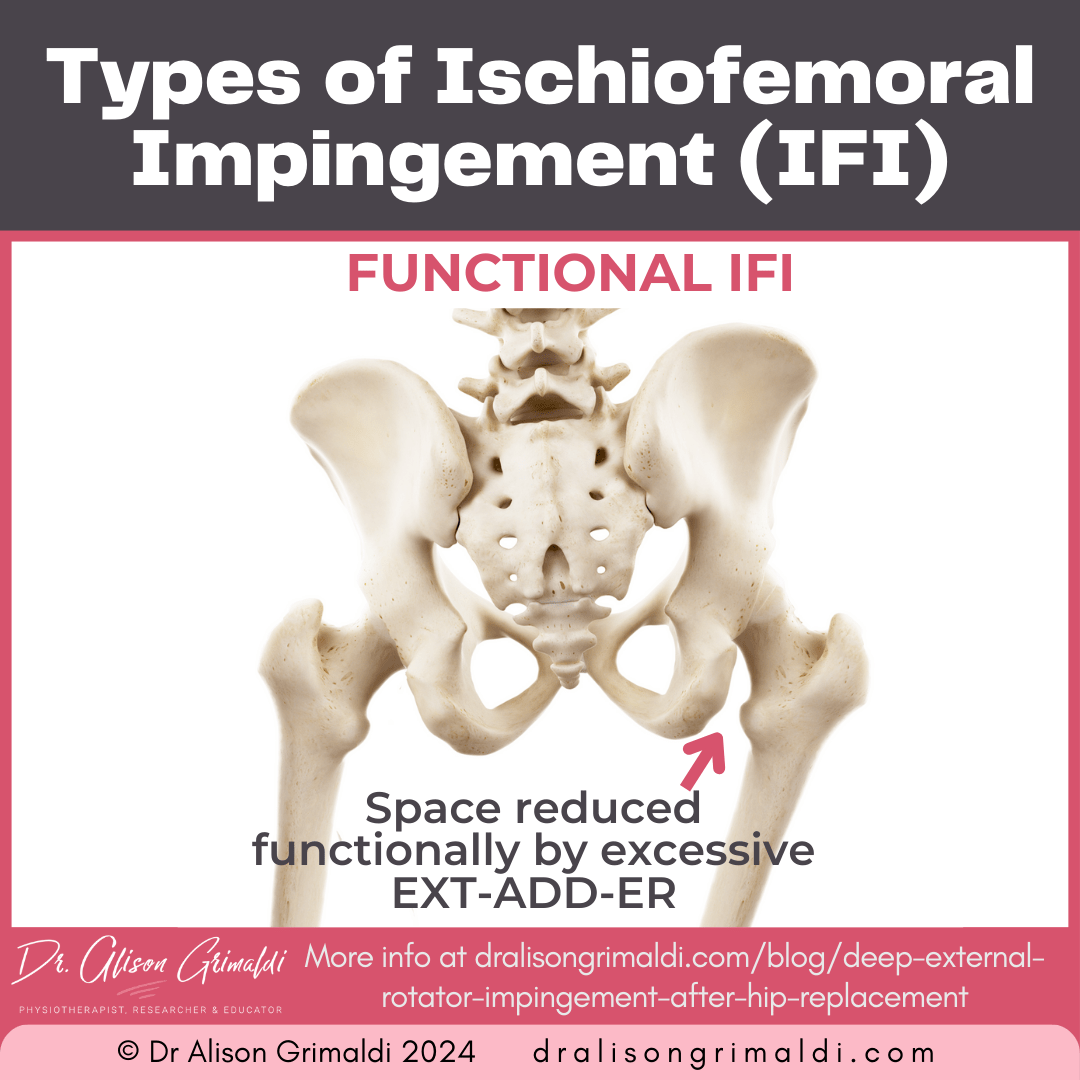
Femoral offset and ischiofemoral impingement after total hip arthroplasty
There are many consideration when selecting a prothesis for total hip arthoplasty. The surgeon makes the most appropriate selection for the individual based on bone density, bone shape, leg length, muscle length-tension relationships, age and anticipated activity requirements – nature and volume of activities.
In the majority of cases, the selection works out well for the patient, but occasionally there may be features of the prosthetic selection that contribute to development of post-operative pain, such as soft tissue impingements. Because there are a number of factors to consider, the surgeon may be forced to make the best decision possible, where there isn’t an ‘ideal’ solution for all factors.
Sometimes there may be less than ideal femoral or global offset3,4 (see the graphic below). This contributes to the risk of ischiofemoral impingement of the deep external rotators after total hip replacement in a couple of ways.
- Reduced offset – distance of the femur from the ischium will reduce the ischiofemoral intervals, and
- A reduced femoral offset means that the abductors will have a relatively shorter moment arm and will be less efficient at controlling the forces trying to adduct the hip in gait (the external hip adduction moment). Increased functional adduction during gait will reduce the ischiofemoral interval.

Want more? Gain access to the entire video library, all online hip courses, the entire ebook series + exclusive access to pdf resources, live meetings & lots more.
Click here to find out how.

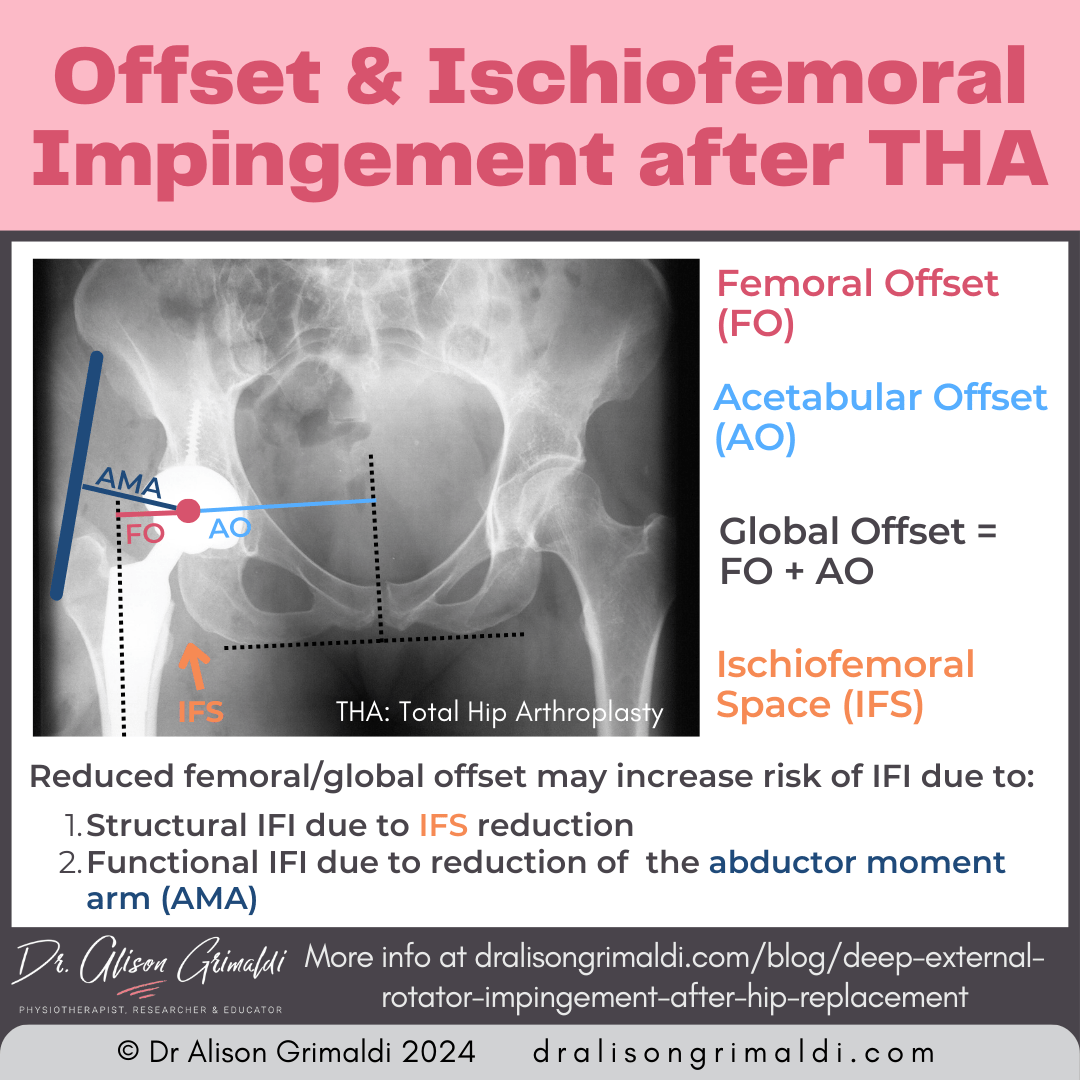
Femoral anteversion and ischiofemoral impingement after total hip replacement
Despite appropriate prosthetic selection, the placement of the femoral component can also influence the ischiofemoral interval and predispose to ischiofemoral impingement of the quadratus femoris after total hip replacement.
Fischer and colleagues (2022) demonstrated a relationship between acute ischiofemoral impingement and greater femoral anteversion after total hip arthroplasty. Femoral version refers to the twist or torsion in the femur – the difference in the orientation of the femoral neck and the femoral condyles distally.2
How the femoral stem is positioned in the femoral shaft will directly impact femoral version. Excess femoral anteversion will mean that when the knee is facing forward, the hip will be in relatively more external rotation. As external rotation can reduce the ischiofemoral interval, excess anteversion related to stem placement may increase the chances of ischiofemoral impingement.
These prosthetic selections and placement factors will be more impactful for females who are already at higher risk of developing ischiofemoral impingement due to ischial morphology.

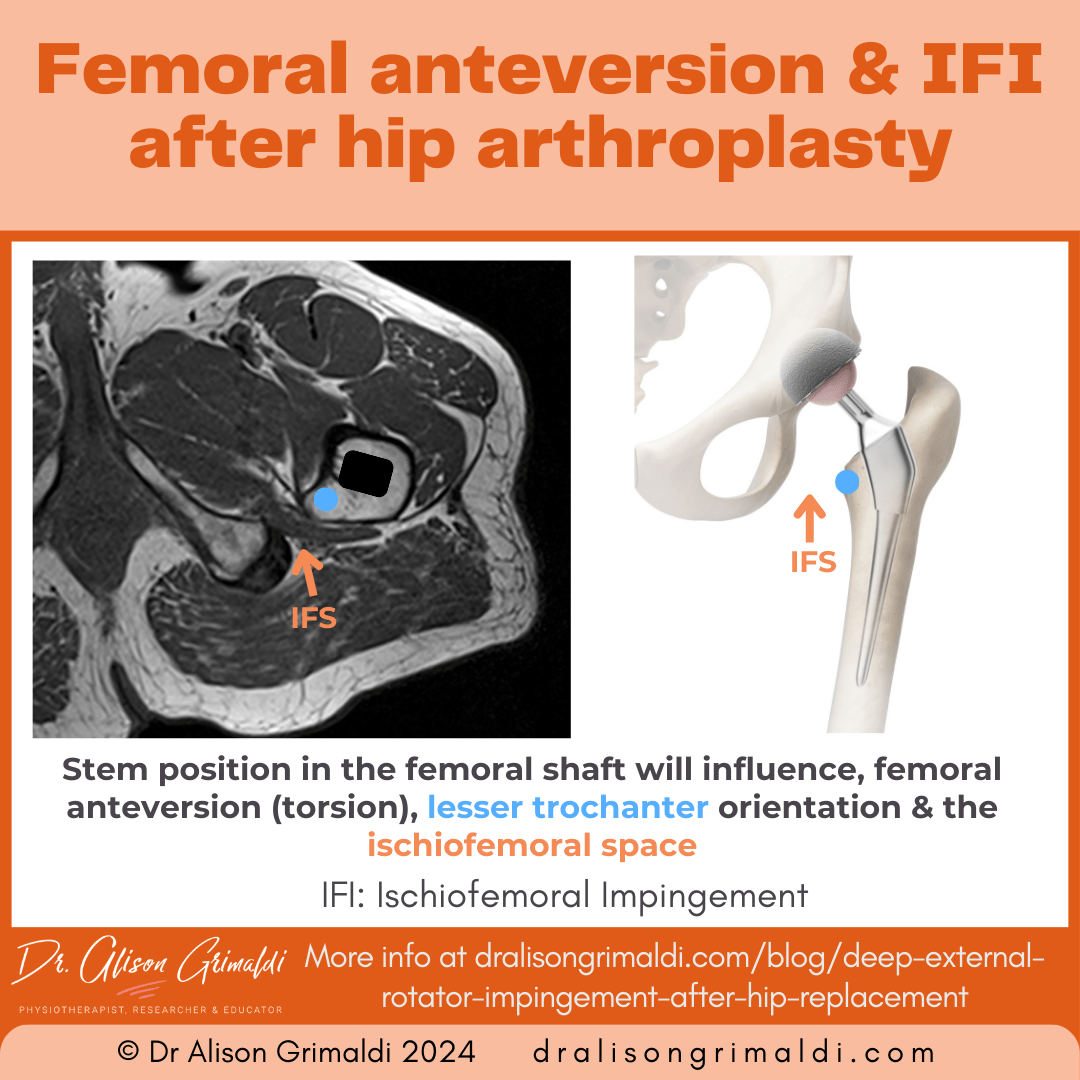

Want more? Gain access to the entire video library, all online hip courses, the entire ebook series + exclusive access to pdf resources, live meetings & lots more.
Abductor deficiency and ischiofemoral impingement after hip replacement
As I mentioned above, functional ischiofemoral impingement may occur in association with abductor deficiency and excessive use of adduction during function – particularly walking or running. There are a number of reasons why patients might have abductor deficiency or greater trochanteric pain after total hip replacement.
This might be due to surgical factors such iatrogenic damage to the abductor tendons, biomechanical alterations related to offset or iatrogenic damage to the abductor nerve supply.
Alternatively, the patient may develop pain and abductor dysfunction related to gluteal tendinopathy that they had prior to surgery or developed post-operatively, often when activity levels are increased too rapidly. You can read much more about this in my previous blog on gluteal tendinopathy following hip replacement.

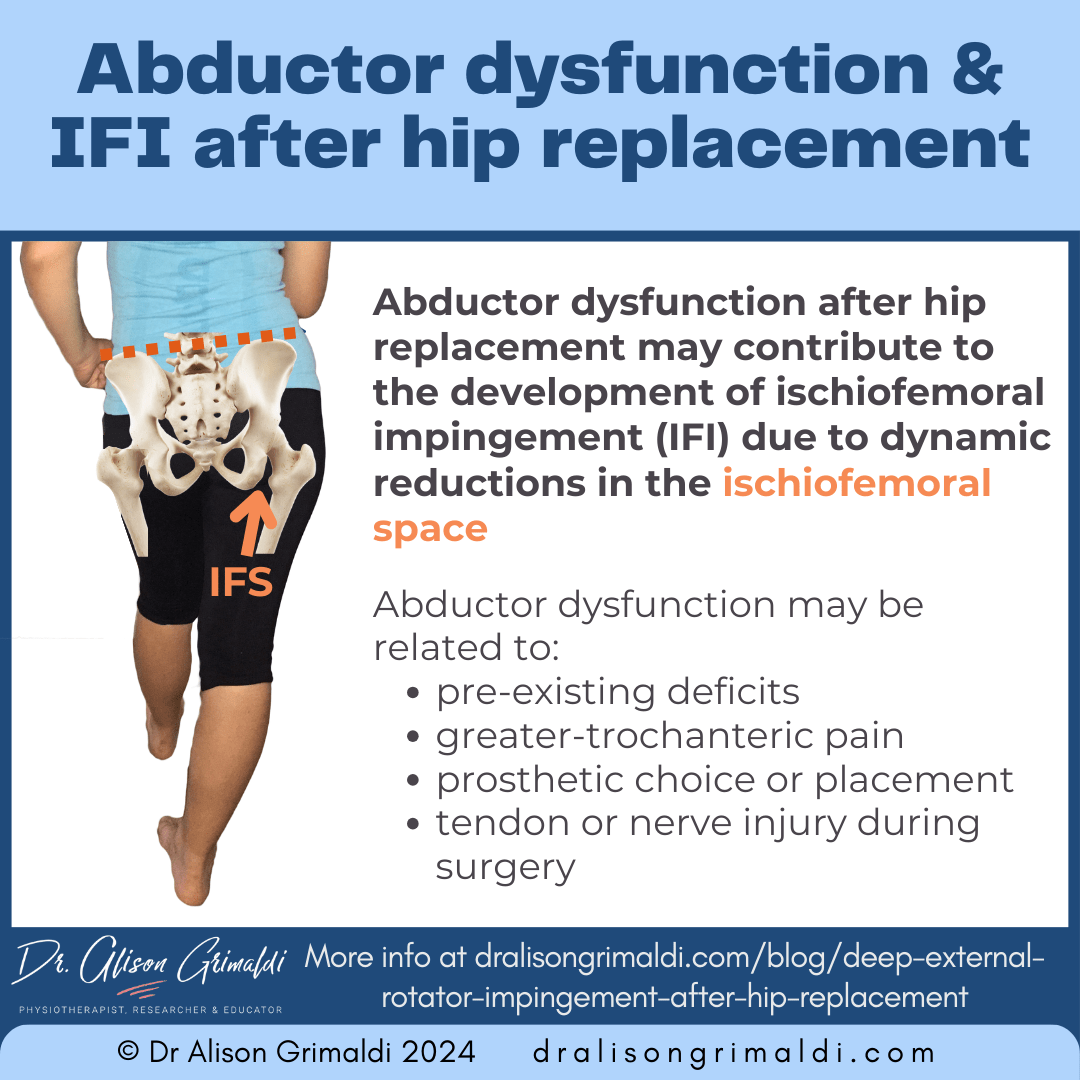
There is often a combination of these factors in patients who develop ischiofemoral impingement pain from the deep external rotators after total hip replacement. There might be some less-than-ideal structural element, but when paired with abductor dysfunction and/or other positional or movement impairments, pain may develop.
The good news here, is that addressing the functional component can usually solve the issue without need to address the structural issue – usually a much bigger undertaking with poorer outcomes.
If you’d like to learn more about ischiofemoral impingement in the native hip and after total hip replacement, you can take my Lateral Hip and Buttock Pain Online course or join me for a live Lateral Hip and Buttock Pain Workshop – online or face-to-face.
Obturator externus impingement after hip arthroplasty
While there are high levels of awareness of iliopsoas impingement after hip replacement, treated commonly with iliopsoas release, there is little awareness of obturator externus impingement after hip arthroplasty. This is likely due to relative rarity of obturator externus impingement.
There is only one case report in the literature reporting obturator externus impingement following hip replacement, based on clinical findings, evidence of impingement on MRI and pain relief following diagnostic injection.5
This group followed up this case study with a study of 40 patients, followed up 12 months after total hip arthroplasty. They divided participants into 3 groups based on the amount of impingement of the acetabular cup with the obturator externus muscle – no contact, slight contact and muscle displaced by the acetabular component. They found no between-group differences in pain or other patient rated outcome measures.6
I have not been able to locate further papers investigating this issue, but is this simply because of its rarity, or also because of a lack of awareness of the possibility of obturator externus impingement after hip arthroplasty? Of those patients who experience persistent pain after total hip replacement, how many receive a clear diagnosis or explanation? It can be challenging.
It’s something to have in the back of your mind if you are managing a patient with seemingly inexplicable persistent retrotrochanteric or deep groin pain (more medial than the iliopsoas).
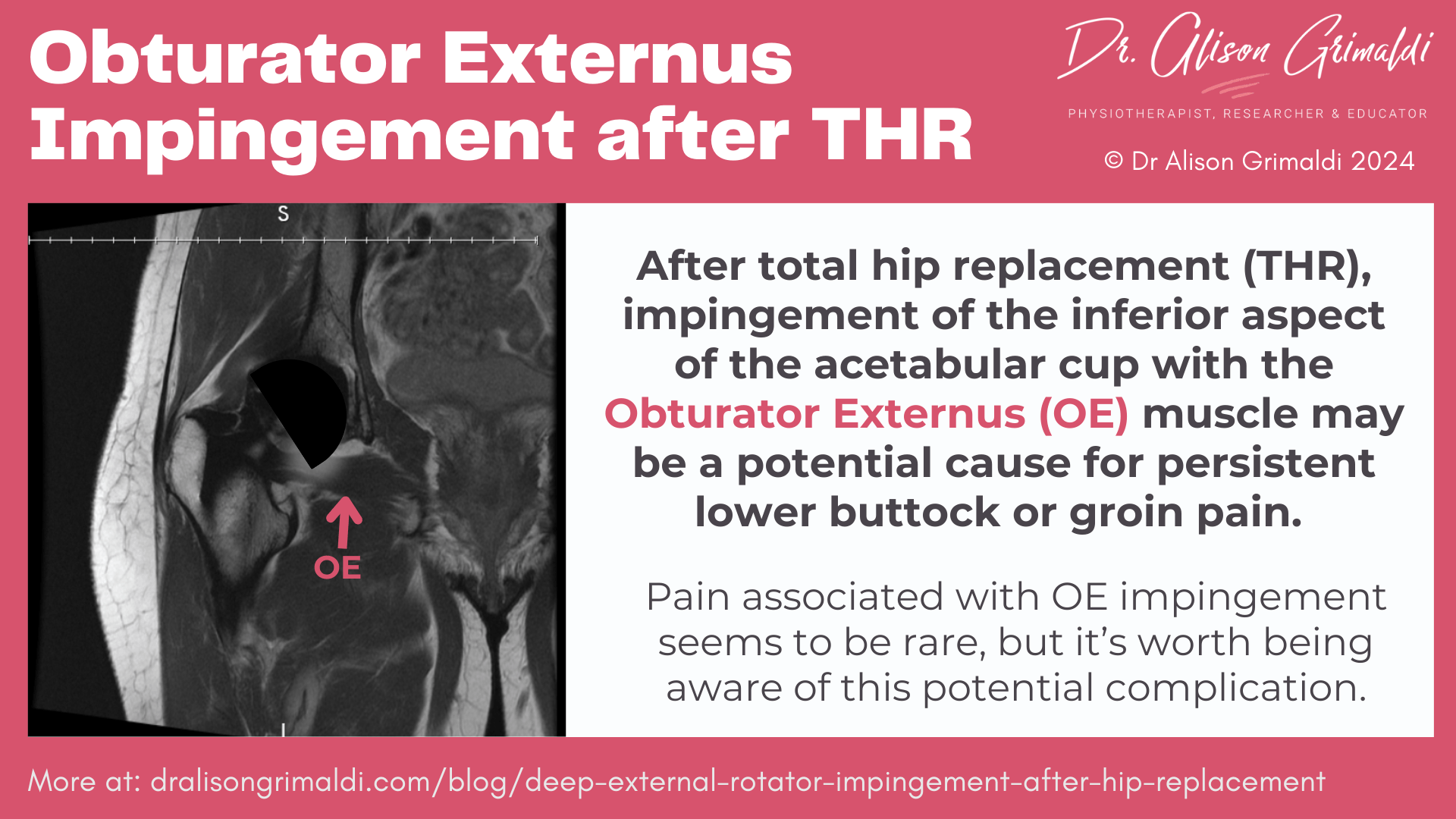
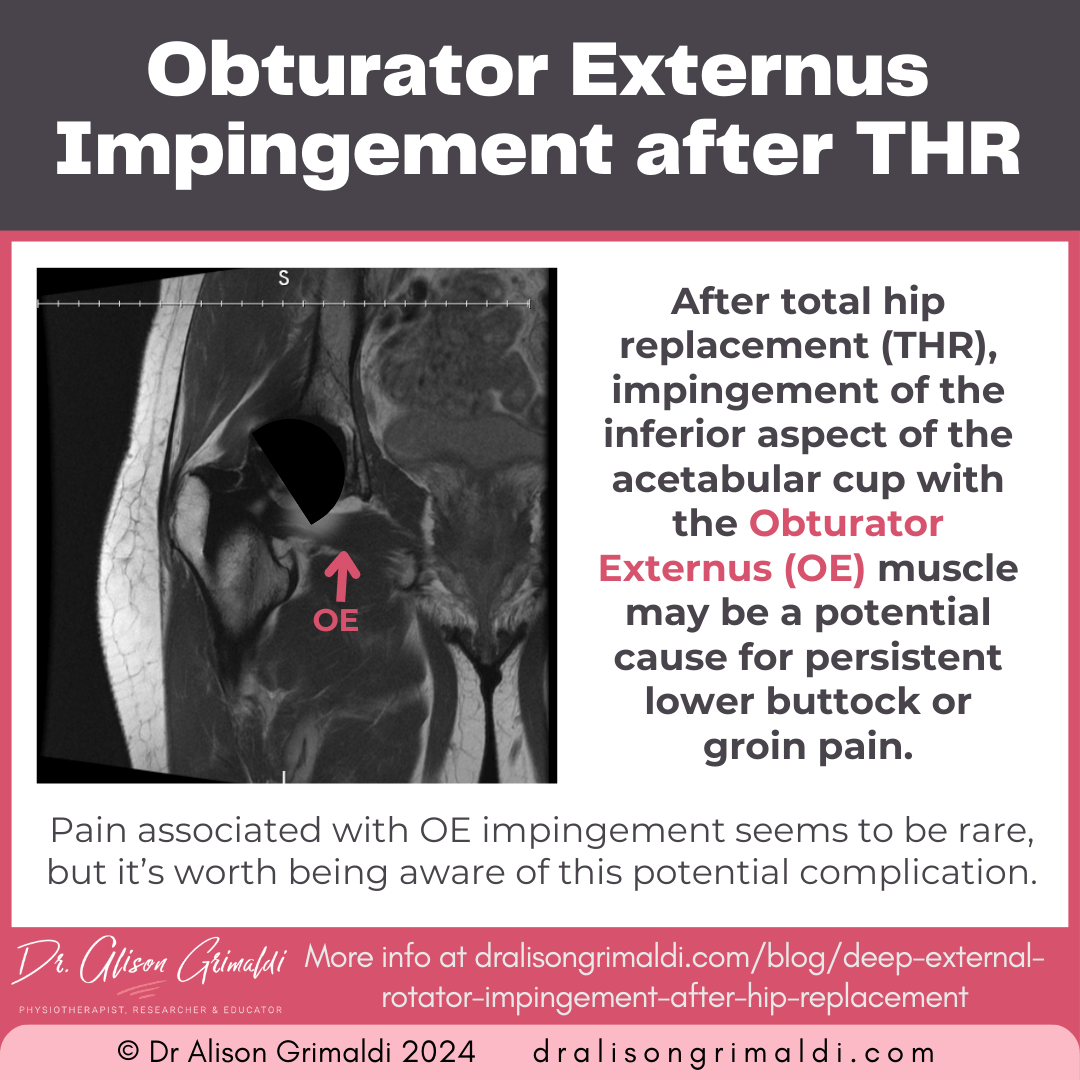
When are symptoms likely to present? As Muller and colleagues pointed out, iliopsoas impingement against a prosthesis is much more likely to become symptomatic due to the high-volume, repetitive sagittal plane loads that are applied at the anterior hip, during walking for example.
The obturator externus slings underneath the hip joint, providing important inferior support for the joint in hip abduction or flexion-abduction, such as in a wide-legged (sumo) squat, deep plié or side lunge. With surgeons confident to offer total hip arthroplasty at a younger age now, these patients often have higher-level activity goals, with many wishing to return to the gym or previous pursuits such as ballet.
So, add this one to your differential diagnosis list in patients with persistent deep lower buttock, or deep medial groin pain, particularly if they have been involved in activities that involve controlling their bodyweight into a sidelunge or sumo style squat.
Have you heard about Hip Academy?
Learn more about Prehab and Rehab for Hip Arthoplasty in hip Academy:
Past Meeting: Prehab & Rehab for Total Hip Arthroplasty
This past live Hip Academy meeting, explored:
- Late stage OA & Prehab
- Post Operative Rehabilitation
- Impact of Surgical Approach

Enjoy the benefits of a world class educational Hip Program, specifically designed by Dr Alison Grimaldi to help improve your knowledge surrounding the Hip and Pelvis, and become an expert in your field + Get access to all previous member meeting recordings!
I hope you’ve enoyed these last two blogs covering deep external rotators after hip athroplasty and deep external rotator impingement after hip replacement. Learn more in an online hip course or join me in an upcoming live hip rehab workshop.

This blog was written by Dr Alison Grimaldi
Dr Alison Grimaldi is a physiotherapist, researcher and educator with over 30 years of clinical experience. She has completed a Bachelor of Physiotherapy, a Masters of Sports Physiotherapy and a PhD, with her doctorate topic in the hip region. Dr Grimaldi is Practice Principal of PhysioTec Physiotherapy in Brisbane and an Adjunct Senior Research Fellow at the University of Queensland. She runs a global Hip Academy and has presented over 100 workshops around the world.
Check Out Some More Relevant Blogs
- Johnson KA. Impingement of the lesser trochanter on the ischial ramus after total hip arthroplasty. Report of three cases. J Bone Joint Surg Am. 1977 Mar;59(2):268-9. PMID: 845219.
- Fischer T, Stern C, Fritz B, Zingg PO, Pfirrmann CW, Sutter R. MRI findings of ischiofemoral impingement after total hip arthroplasty are associated with increased femoral antetorsion. Acta Radiol. 2022 Jul;63(7):948-957. doi: 10.1177/02841851211021044. Epub 2021 Jun 7. PMID: 34098775.
- Luca DiGiovanni P, Gasparutto X, Armand S, Hannouche D. The modern state of femoral, acetabular, and global offsets in total hip arthroplasty: a narrative review. EFORT Open Rev. 2023 Mar 14;8(3):117-126. doi: 10.1530/EOR-22-0039. PMID: 36916758; PMCID: PMC10026057.
- Oliveira AL, Azevedo DC, Eajazi A, Palmer WE, Kwon YM, Bredella MA, Torriani M. Assessment of total hip arthroplasty as a predisposing factor for ischiofemoral impingement. Skeletal Radiol. 2015 Dec;44(12):1755-60. doi: 10.1007/s00256-015-2229-y. Epub 2015 Aug 11. PMID: 26260537.
- Müller M, Perka C, Tohtz S. Das Obturator-externus-Impingement nach Hüftprothesenimplantation [Obturator externus impingement after total hip replacement]. Orthopade. 2009 Nov;38(11):1113-6. German. doi: 10.1007/s00132-009-1469-8. PMID: 19680628.



